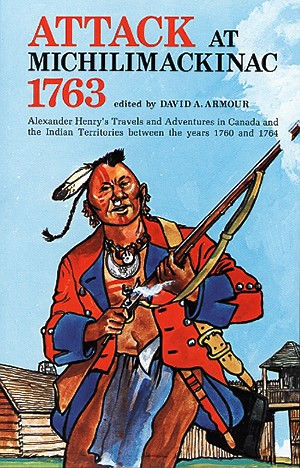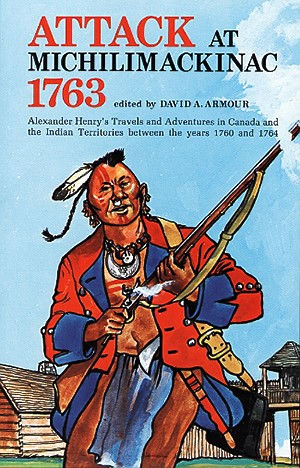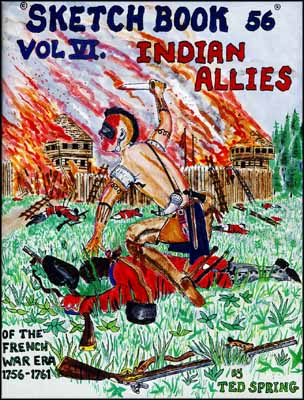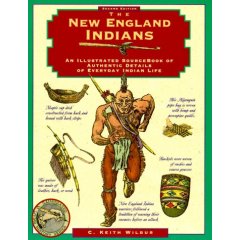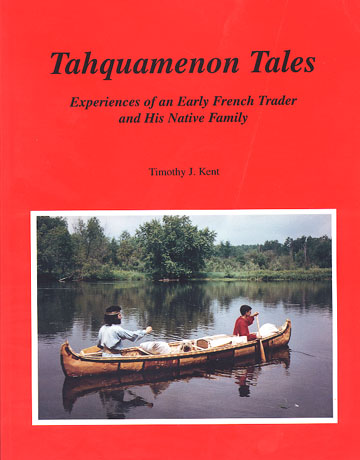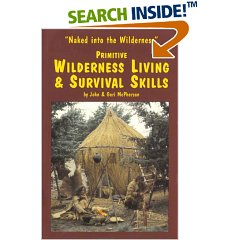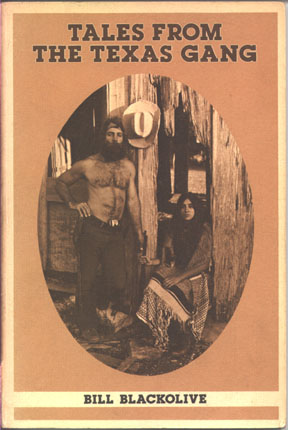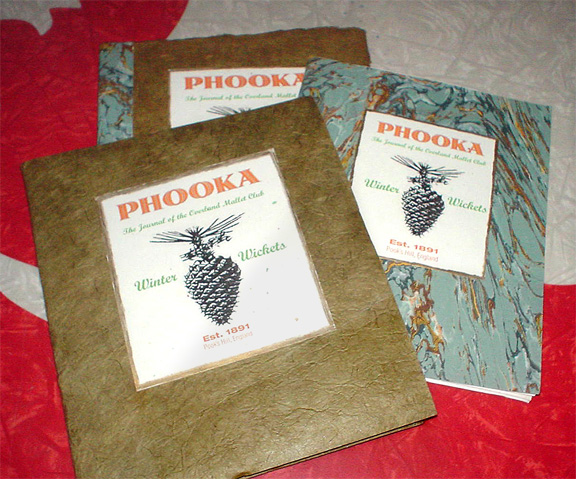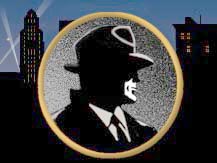I’ve really enjoyed exploring Indian heritage the past few years.
I could hop right to the punchline here and tell you about several great, punchy, essential, straightshooting books I’ve discovered about N.A. heritage (and fashion), but really there’s a lot of background here, so first things first…
I first encountered Native Americans via an attempt to explore subsistence practices on the alt.natives Google newsgroup. Some were open, some very much not so. It was interesting seeing some of the old ways still in operation even online. That is, if you ask a question, you likely won’t get an answer until you’ve run the gauntlet. Ha. It’s pretty cool, though: Are you able to handle an answer? Where are you coming from? Where are you going? Unfortunately the vibes, glitches and cliquishness of identity politics come into play as well. But I did have some very good experiences and learned quite a bit. But not about subsistence. Ha!
I’ve had a strong connection to the Straits area of Michigan for decades. I’ve lived it via the backways. A couple years ago I finally went in thru the frontdoor and visited the Fort as a trailer-pulling tourist with kids. I discovered the astonishingly deep giftshop under the Bridge: there are books there you can’t find in graduate libraries.
And I know why that book section is as good as it is.
We then toured the Fort and saw the very good short film about it. Right then I started getting a revived spark about the area: it was when I saw the Indians in the film and the outfits they were wearing. Cultures express themselves in their apparel. I tend to think that people who’ve been thru more tend to display more, at times. The bright colors and variety of apparel, hairdos and accessories struck me like it never did before. It’s still funny for me to think that I’m into apparel in some way, but it’s true. I also tend to think that the French-Indian merge-style would look REALLY cool today even! If you wanted to live that reality and say so, anyway.
OK, a year before, in San Francisco, Martha and I came across “Fruits,” a book and postcards of Japanese youth street fashion. Straight-up snapshots of kids standing there in their outfits. It blew us away. We bought and used up all the postcards. The outfits were over the top, extraterrestrial, pieced together, circus collage. They worked. Max-cool. Now, we’re already inclined a bit to the Hello Kitty worldview, Chinese magical realism martial arts movies, Studio Ghibli (Totoro) and the like. The Urban Primitive idea and primitive-synthesis in general has seemed cool to me for a long time. Check it out (and click on it if you want to order some postcards, too):
I scrutinized all the books in the park bookstore below the Bridge, even read one standing there. I settled on buying several. They’ve proven to be astonishing wonders to me. I highly recommend them all. They each seem to bolster the others in essential ways. You won’t likely find any of them elsewhere than here.
But more background first. The first time I got away from home on my own I ended up in short order tenting out with pals on Mackinaw Island as guests of a highschool buddy’s family. I didn’t know his dad was the park superintendent. He asked me where I was going to college. I had no idea. I had found one school that seemed interesting and sent an app to them about a year late—like the week previous. It had the best profs to students ratio, the best girls to boys ratio, and the biggest library, and it was cheap, but somewhat hard to get into. That was my shot. Otherwise, I’d just start trapping that fall. In fact, I was thinking of not returning from my bike ride, just riding further west and finding work. That dad said, Well, he’d gone to that same school and liked it and he was raised in that town and his dad was still living there so if I was admitted I should go look him up. I did end up going there a year, and meeting his dad, a wonderful old man of woodsy craft and art. The next year I worked on the Island and kept in touch with the bossman and his family. They were openminded but disciplined folk who didn’t approve of my carefree life but didn’t reject me either.
I later came to realize that the whole Island and mainland inter-park fort system up there came to be archeologically dug-up and finished and expanded (to include a couple Tall Ship restorations even) and was well-run due to this fellow, yet he always had time for me and made a place at the dinner table often. They had a wide variety of guests continuously for being such stern-seeming folk.
Many years later, sure enough when I asked at that Bridge bookstore about how this great book selection came to be, I was told by the cashier, as I thought I would be, that Dr. Armour sees to all this, of course. Hands-on even in retirement, eh?
The main book I chose to read was a slender popularizing volume edited by him, too. I never knew he did books, too. A quiet guy. Or perhaps I was too noisy. How silly of me, of course a serious dual-mode historic, research, and popularizing resort/museum/park would have a thoroughgoing publishing effort, in multimedia, too, I’m sure, to support its activities. And sure enough there were quite a few books put out up there. But this one seemed to be about the oldest, a key book.
“Attack on Michilimackinac” is the edited story of the adventures of Alexander Henry. It’s amazing. First off, I hadn’t thought in a long time about the fort attack that I learned about as a kid. After the French were defeated, the English initiated rude, crude and lousy relations with the Indians—no thanks for the help in the war, no presents, no respect of customs. The French had done all these very well and had even ended up merging cultures. The English were bastards, in short, and so soon enough the Indians faked them out with a game of lacrosse in front of the fort then massacred the English soldiers and took the fort, leaving all Canadians alone. A few English lived, but maybe only this Alex Henry. He’d been made a blood brother by a respected Indian, who managed to spare his life. Henry had come to the fort as a 21-year-old carrying trading goods in a voyageur canoe from Montreal. The story is fresh and clear and riveting from start to finish. You learn all about voyageurs (they went about a year of paddling there and back on a quart of cornmeal a day; their canoes carried about 4 tons), the various Indian nations, their relations to each other and to French and English. Our hero has about a dozen very close calls with both nature and the Indians. He’s offered human-hand soup after the fort massacre, no less. Every time he and his adoptive family run into other Indians they get along fine but if some bad luck comes up the other people will strongly suggest the prompt sacrificing of the new guy who obviously brought the bad luck, nothing personal. I doubt you’ll read a better condensing of that time and its action—and it’s thin even. And did you catch his age? This door-to-door coldcalling sales trip was his first foray into the world after leaving home. And what a doozy! I had a lot of new experiences on that first bike tour when we tented on the Island, but ol’ Alex had a few more!
The main thing to me is what Henry says in the Intro: he’s just telling what happened and doing his best to withhold all opinion. And that’s what he does. He’s not teaching us Indian whys and wherefores. There’s no explanation. Just nonstop action. We can draw our own conclusions.
Click on the image here to order from OYB:
But it’s a bit thin on imagery. There are some nifty little 60’s-style sketches throughout.
To flesh out that aspect, I bought a thing called a “sketchbook”—these are used by reinactors to help them get their period outfits and ensembles just right. Or else they’re coloring books. I can’t quite tell. The one I got, “Sketchbook 56—Indian Allies” by Ted Spring, has a great and visceral (so to speak) cover drawing. Totally amateurish—but it captures the essence of the action on that fateful fort day. But it’s action that happened in many places in that age. To me, it hits stronger than a Hollywood movie. The interior is all handwritten, like a zeen (like Cometbus or Moonlight Chronicles, eh?). It’s straight-up details on who carried and wore what, where and why. There’s a lot of description of folkways. Again, no opinions. The sections on Indian War are amazing and enlightening. But throughout the detailed yet somewhat folky drawings of Indians and French-type folk standing around are just amazing to see. The spirit comes out somehow. The nobility—apart from concern about money and career, eh? I really like this period of merging: Indians carried bows and arrows and hatchets and pistols and rifles. They wore captured or traded English and French uniforms, maybe a helmet with plume, plus loincloths and facepaint. The book is black’n’white but somehow color exudes. A sketches capture the same cool insouciance of people standing around in intense accoutrement that the “Fruits” images do for the Japanese street fashion kids.
Here’s a few sample pages:
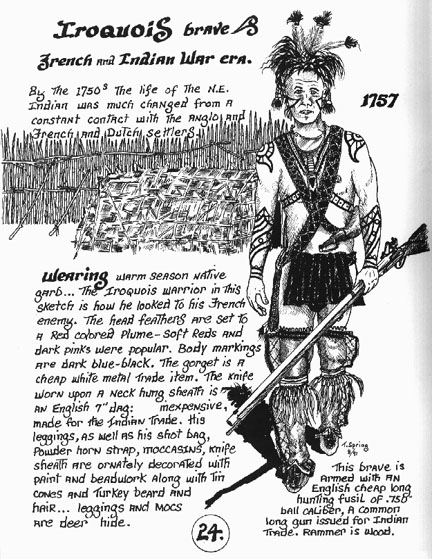
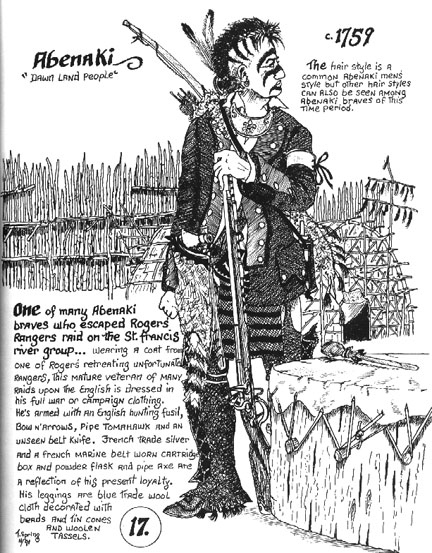
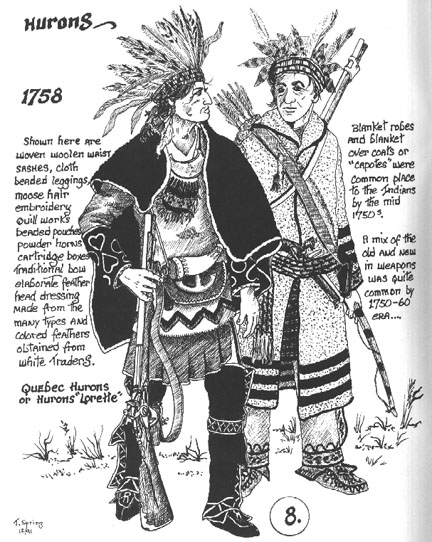
“Woodland Indians” and “New England Indians” are also full of sketching and indepth lore about all aspects of these Indians. They’re by Keith Wilbur. Who’s an M.D. –Man, I just think it’s cool that all these hardcore books are sketched and handwritten. Caligraphy lives! I see that Dr. Keith is the author of a bunch of other early American period popularizing books. Looks like a fun job and a great way to share this amazing info. I checked out the war section here, too, and it had some details that meshed well with the scary parts of Henry’s tale. Indians would get psyched for a week of ritual before going to war. Then they’d trot off in line of battle. If someone at the last minute didn’t want to be a brave that time they could fall to the rear of the line, no problem. You didn’t have to fight unless you were ready to. Then depending on how the fight went, if you were captured you might be turned into a slave or adopted into the new tribe if you could run the gauntlet or you’d have to prepare yourself for torture. As you prepared yourself your captors were also getting ready to prepare you. Torture had a few stages, but you’d be softened up first. Commonly racked, carried about and enjoyed in various ways, then eventually roasted, then eaten. Hey, tough luck. Whew, what a way. But of course there’s lots more to The Life, so let’s not dwell on the darkside. (See the movie “Black Robe” if you have a thick skin.)
Speaking of reenactors, people are really getting into reviving the old arts of living off the land. Some do it to be period-correct, others to just learn the skills, and others are even just including some practices in with their everyday modern life. I would think that all of them find that these ways really do work to connect us to the earth and to the peoples who care enough to actually live on it. Now, anyone could do this, I suppose. To a small extent. It helps get it right if you’ve been a part of a people working in the same directio for a few millenia already, eh? Live free or die, baby. It’s real. I’ve found several books that are helpful in this light. Some have a nifty Straits-area focus, including the canoe, water and sugaring arts of this region in their how-to info. Some emphasize the skills of the merged period of the Metis—when the French and Indians were sharing folkways and building together in respect for about 100 years.
A final background angle is that an old friend of mine, back from those Island days, is who first showed me bike and XC ski racing. I keep up on him a bit via friends of friends. He married another Islander and they live up there and had a whole buncha kids. Now, I haven’t seen him at ski races in decades, but I’ve heard that he’s been doing the Voyageurs club, trips and reenactments with his kids for years. Makes sense. He was always oldschool outdoor sport. I wouldn’t be surprised if the first appearance of carbon and ti not coincidentally timed with his move to heritage action. I’ve also noted that for the past few years there’s been a big annual weekend of Primitive Skills sessions every August on a quiet island next to Mackinaw Island. I gotta get myself and my own kids up there more, methinks…
Click on these images to check em out further:
(This last book above is a fine one by the McPhersons, who subscribed to OYB and traded books for zeens way back in the day. They’re great on the subjects of the one-hour bow and brain-tanning. Oh yeah! –And much more, I’m sure.)
Lastly, let’s not forget the Indians of the Southwest. Ha. Of course there’s much more every which way, but I was also fortunate to have the experience of getting inside the heads of the wildfolk of the SW area—Indian, Mexican, white and black alike—thru the authentic book “Tales from the Texas Gang” by Wild Bill Blackolive, first editions which I resell and a new edition I have in the works. I think it captures the spirit of the 1800’s free people like nothing else. It’s like Cormac McCarthy’s “Blood Meridian” only more realistic (yow!) and funny (whoa!). There’s an excerpt at the bottom of my book listing of a decent multicultural scene (ha). It puts some ideas on their noses, where they belong.
Collector’s edition:
The new ULA PRESS edition:
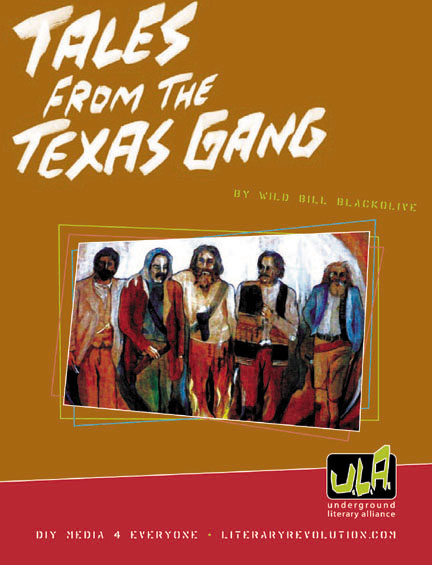
I’m studying other Indian Heritage books presently, looking for candid depictions and insights. I’ll report further about books that warrant inclusion.
